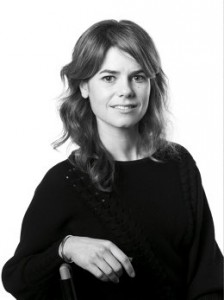Bringing Design Thinking To Social Problems, Ideo.org Focuses On The People In Need | Complete article: FastCoexist, Dec 2013 |
The nonprofit spin-off of the huge design firm takes on issues like sanitation and clean cook stoves from the unique perspective of the design world.
Excerpts – Jocelyn Wyatt and Patrice Martin are the co-leads and executive directors of Ideo.org, the unique nonprofit wing of innovative design firm Ideo. Their mission: apply human-centered design to poverty-related challenges … and in the process, change the way that a for-profit business can use their resources to create social good.
Exactly what is human-centered design? Whether working with low income parents in the U.S. on how to engage in their children’s education, or creating a sanitation business in Ghana, Wyatt and Martin say their goal is to focus first on the people being served, enabling them to find a solution that’s better. “Instead of just looking at the problem from a technical perspective, we always make sure to integrate what’s desirable to people,” says Martin. “Almost all of our work begins with the actual end user, or the target market, or the person that we ultimately want to impact. We’ve found that that lens was in many cases missing from work in the social sector. We want to make something and find out if it works–and if it doesn’t, how we can change it?”
One example is the Uniloo/Clean Team toilet developed by Ideo.org alongside Unilever and Water & Sanitation for the Urban Poor, using Kumasi, the second-largest city in Ghana, as a test market. “Public pay toilets were prevalent in Kumasi, and they were used quite a bit of the time,” reports Wyatt. “They were dirty, and sometimes inconvenient, but, you know, it was still kind of the best option.” And yet there continued to be open defecation in the city. In talking to Kumasi residents, Wyatt says, they soon learned about the problem of, um, emergencies. “People would say, ‘Yes, I use the public toilet,’” Wyatt says. “And we would say ‘Always?’ And they would say ‘Yes.’ Finally they would admit that, ‘Well, yes, sometimes in the middle of the night there’s an emergency, and I dump the bucket outside my home in the gutter.’”
That led the team to realize that instead of bringing the people to the toilets, they needed to bring the toilets to the people. Clean Team now has 330 Ideo.org-designed Uniloo toilets in operation on a rental service model–waste is picked up three times a week and delivered to a treatment facility–and they’re hoping to scale that to 10,000 by the end of next year.



